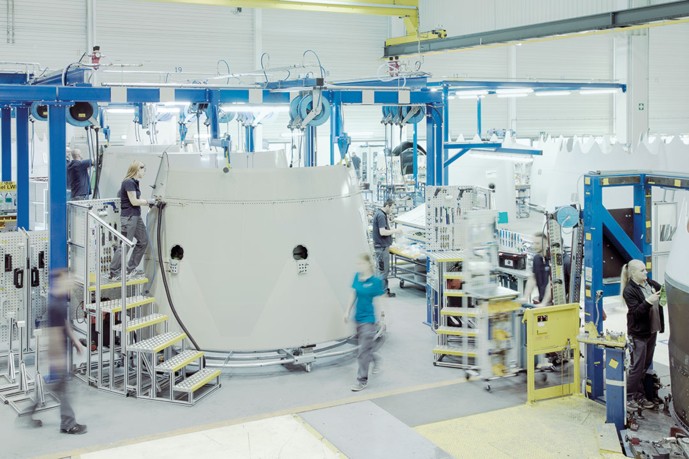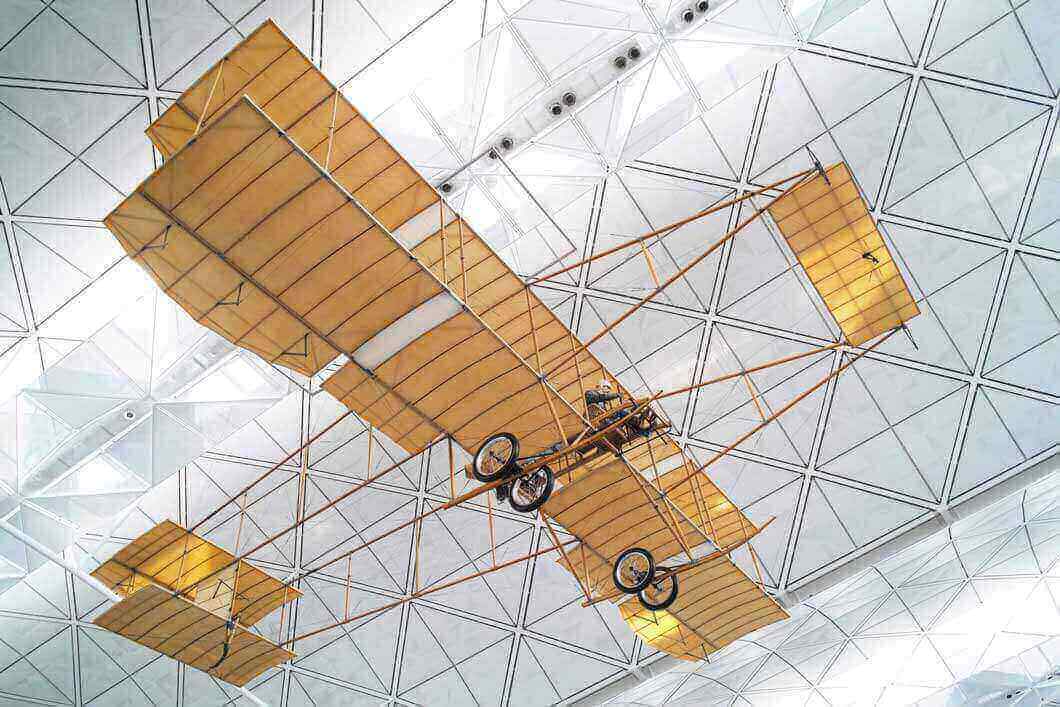Optimized Production of Translating Sleeves and Blocker Doors
20.03.2017
It‘s not just the quality and performance of a component that matters but also its efficient manufacturing that plays a decisive role in global competition. Apart from reliability and cost effectiveness, another critical characteristic is a high degree of flexibility seamlessly adapting
to supply the required number of units ordered by customers. Thanks to its clocked assembly line for Airbus A350 XWB translating sleeves as well as optimized blocker door production, FACC is well prepared for the future.
Clocked assembly line for Airbus A350 XWB translating sleeves.
The impressively dimensioned clocked assembly line went into operation in January 2017. Practical experience has shown that the manufacturing concept newly developed for this component has increased output by 25% while allowing a flexible accommodation of customer demand as well as high production rates requiring fewer employees; any personnel freed up by this new production model is deployed for boosting production rates. Additionally, the harmonized cycle scheme simplifies work and reduces errors as each worker only needs to complete a few standardized tasks. Workplaces have been optimized as well, with every material and tool close at hand. And this is how the line operates:

Eight steps are all that‘s needed.
At the first station, the external panels and the inner acoustic panels are positioned and drilled together with their essential fittings. These assemblies are then conveyed to the next station on transport carriages where more detailed installation work including the mounting of the blocker doors is carried out. At the next station, they are inspected for correct geometry and dimensioning by means of an optical measuring system. The subsequent three stations are used for final assembly as well as for final inspections in the turning and pivoting carriage. Accurately interspersed supply points ensure that the right amount of required materials is always available at the right time, with precise work instructions guaranteeing smooth overall progress.
This is just the beginning.
The success of the reconfigured line has convinced the FACC Engines & Nacelles Division to focus on designing and realizing additional clocked line projects across the entire production sector. We are currently working on the implementation of a clocked assembly line for Boeing 787 translating sleeves; a similar line for the Airbus A330neo fan cowls is already in the works.
Mixed-model line for blocker doors.
The movable blocker doors installed inside the translating sleeves redirect the engine blast, decelerating the aircraft after landing. By reversing the traditional manufacturing process, FACC was not only able to speed up production times and boost output while reducing floor space requirements but also ensured that several blocker door varieties could be manufactured on a single line.
High degree of flexibility.
The newly installed line is used to manufacture blocker doors for both, the Boeing 787 and the Airbus A350 XWB. Translating sleeves contain blocker doors with varying geometries which the line is able to accommodate and produce, too.
Division of working steps.
Each type of blocker door used to be assembled on a type-specific tool, compacted and then cured in the autoclave. The compaction process involved, however, proved highly time-consuming – the CFRP layers first had to be packed in airtight bags, then the air was evacuated and finally the layers were compacted under atmospheric pressure. We started converting our production by preparing a potential analysis as a first step. A task distribution diagram was used to determine the optimum utilization of the total of eight work stations operated by four workers. Individual process steps are used efficiently thanks to dual work stations, which means that one employee is responsible for two work stations and will work on the second tool while the compacting process is still running on the first one. Additionally, we have improved the ergonomic conditions of all stations and workplaces.
Compelling figures.
The required skins, cores and cuttings are supplied from drawers located directly under the manufacturing tool. One of the main benefits of the mixed-model line is that floor space requirements have been more than halved – laboriously searching for parts as well as hauling equipment has thus become a thing of the past. All in all, the new line concept has brought about a marked decrease in production time accompanied by an increase in output. For the future, one thing remains certain: FACC will constantly strive to offer its customers the most efficient high-quality manufacturing solutions.











